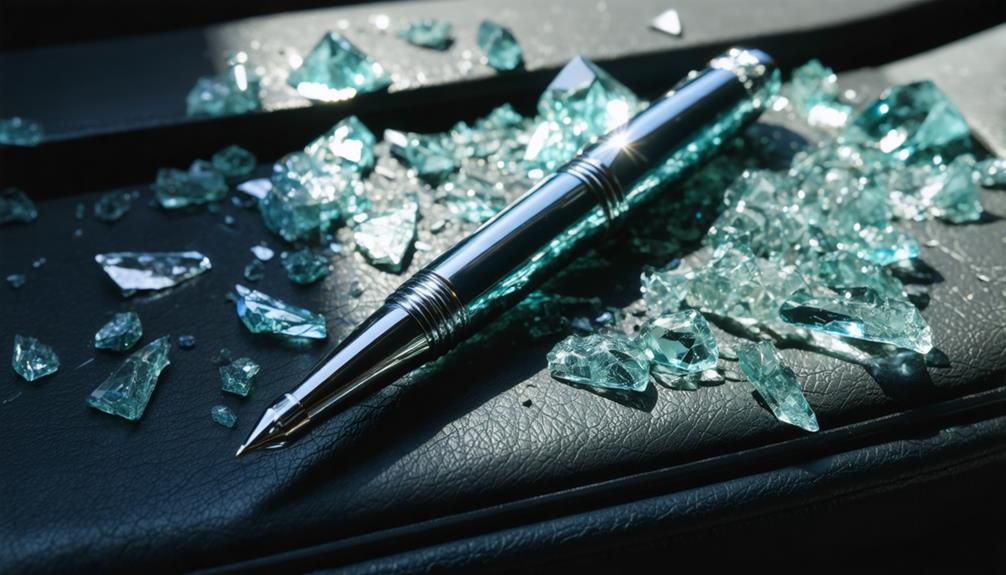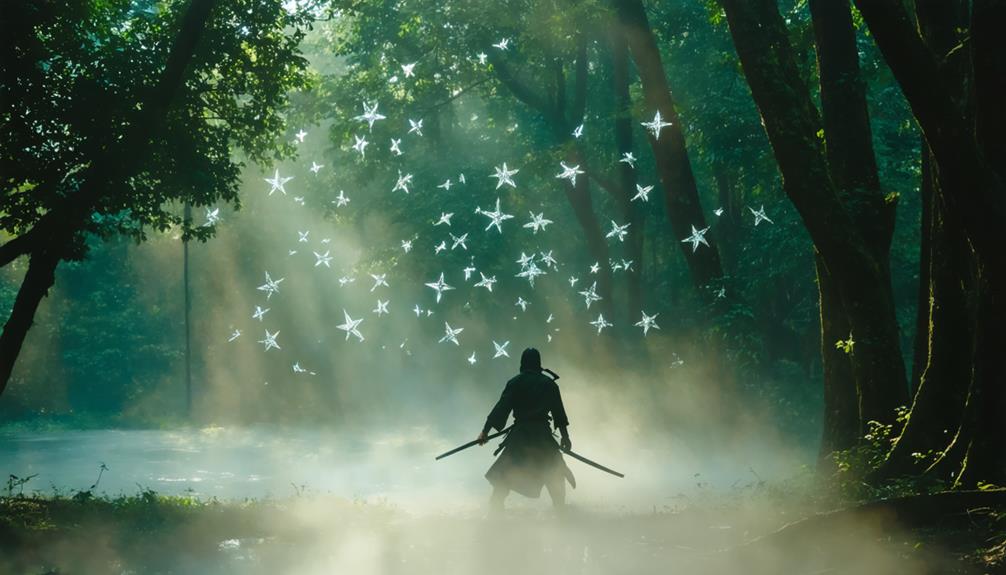
Brainstorm Security Shop

For Orders Over $199

On Any Of Our Products

Details On Refund Page
You might think of ninja stars as mere toys or collectibles, but their origins and uses are far more intriguing. Shuriken played vital roles in feudal Japan, serving not just as weapons but also as tools for espionage and distraction. With different types designed for specific tactics, the craftsmanship behind these stars reflects a blend of art and utility. What you may not realize is how their design has evolved over time and what that means for modern enthusiasts. Exploring these aspects can reveal much more than you’d expect.
Ninja stars, or shuriken, have a rich historical background rooted in feudal Japan. These throwing weapons were integral to ninja training, where stealth and precision were paramount. Unlike swords that demanded brute strength, shuriken required finesse and skill, making them perfect for covert operations.
In the realm of ninja espionage, these stars served multiple purposes, from distraction to assassination, enhancing a ninja’s ability to gather intelligence without being detected.
You’d find that shuriken were often crafted from various materials, including metal and wood, and designed to be easily concealed. During your training, you’d learn not just how to throw them accurately, but also how to use them strategically in different scenarios. This versatility made shuriken a favored tool among ninjas who operated in the shadows.
As you delve deeper into the history of these fascinating weapons, you’d discover how they reflected the cunning and resourcefulness of their users. The effective use of shuriken in ninja tactics demonstrates the intricate blend of art and warfare, emphasizing the importance of stealth as a core principle of ninja culture.
Diversity defines the types of shuriken, each designed for specific tactics and throwing techniques. You’ll find that shuriken designs vary widely, reflecting the needs of the ninja who wielded them. Some are better suited for stealth, while others excel in competition settings. Here are a few notable types:
When you’re learning about shuriken, you may also want to check out shuriken competitions. These events showcase skill and precision, allowing practitioners to demonstrate their throwing techniques.
Understanding the different types of shuriken can enhance your appreciation for the art of throwing and help you decide which style suits your interests best. Whether you’re training for fun or aiming to compete, knowing the variations will sharpen your skills and deepen your knowledge of this fascinating aspect of ninja culture.
The effectiveness of shuriken isn’t just about their design; it’s also deeply rooted in the craftsmanship and materials used to create them. You’ll find that traditional techniques play a crucial role in ensuring each shuriken is both functional and durable. Artisans often use high-quality metals like steel, which can withstand impact and maintain sharpness over time.
Additionally, unique designs can enhance the aerodynamics of shuriken, making them more effective during use. Various shapes and sizes cater to different throwing styles and purposes, allowing you to choose one that fits your needs.
Here’s a quick overview of some materials and their characteristics:
| Material | Characteristics |
|---|---|
| Steel | Strong, durable, retains sharpness |
| Aluminum | Lightweight, easy to handle |
| Wood | Traditional, often decorative |
| Plastic | Safe for practice, less durable |
| Titanium | Lightweight, high strength |
Mastering techniques for throwing shuriken can significantly enhance your skill and accuracy. To become proficient, you need to focus on a few key elements that will make a noticeable difference in your throws.
When you practice, pay attention to your grip. It’s crucial for control and precision.
Next, evaluate your aim and the distance from your target. Aiming too high or low can throw off your accuracy.
Lastly, remember that the follow-through is just as important as the throw itself. By incorporating these techniques, you’ll see improvements in your throwing skills, allowing you to hit your targets more consistently. Keep honing these fundamentals, and you’ll become a master shuriken thrower in no time!
As you refine your shuriken throwing skills, you might find yourself drawn to the modern applications and collecting aspects of these fascinating weapons. Today, ninja stars aren’t just tools of martial arts; they’ve become collectible items for enthusiasts. You can discover various styles and designs that appeal to different tastes, whether for practical use or decorative display.
| Type of Shuriken | Purpose | Collectibility |
|---|---|---|
| Classic | Martial arts practice | High demand |
| Decorative | Home decor | Unique pieces |
| Functional | Training | Limited editions |
| Vintage | Historical value | Collectors’ gems |
Collecting shuriken can be an exciting hobby. You’ll find everything from traditional designs to modern interpretations. Some collectors focus on the history of these weapons, while others appreciate their craftsmanship. Whether you’re looking to enhance your martial arts practice, add to your decorative display, or delve into the world of collecting, there’s something for everyone. Just remember to respect the art and history behind these intriguing items!
You should check your state regulations regarding ownership. Many states have specific laws about such items. Always prioritize safety precautions if you decide to own them, ensuring you’re informed and compliant with local laws.
Carrying a weapon for self-defense depends on local laws. You’ll want to check ninja star legality in your area. If you’re trained, understanding proper usage and safety is crucial before considering it for self-defense.
To clean and maintain your gear, start by wiping it down with a dry cloth. Store it properly in a moisture-free environment to prevent rust, and consider applying a light oil for added rust prevention.
When choosing beginner options, look for simple ninja star designs. They’re easier to handle while you practice ninja star throwing techniques. Start with lightweight models to build your skills before advancing to more complex options.
When using any throwing tool, always prioritize safety. Use proper technique to enhance control, and don’t forget eye protection to shield yourself from potential accidents. Being cautious ensures a safer and more enjoyable experience overall.
